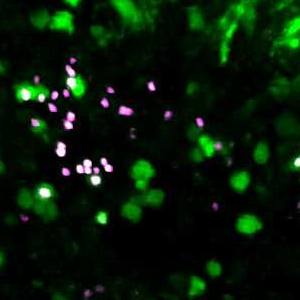-
How does a man get Peyronie’s disease?

Peyronie's (pay-roe-NEEZ) disease is a scar-forming condition that can cause pain, penile bending, penile shortening and erectile dysfunction. The condition, which is estimated to affect millions of men in the U.S., is characterized by a curvature of 15 degrees or more during erection.
"Most men with Peyronie's disease present during their sexually active years — 40 to 50 years of age," says Dr. Gregory Broderick. "They have no other problems with erection, other than the curvature."
Scar tissue, typically resulting from injury, builds up between layers of the inner penis. This prevents the layers from sliding past each other during an erection. Initially, an inflammatory phase produces a painful lump called a plaque. The inflammatory phase of Peyronie's disease can last six to 18 months. Dr. Broderick says pain may diminish over time. However, without treatment, scarring progresses and curvature can worsen.
Watch: Dr. Gregory Broderick talks about Peyronie's disease.
Journalists: Broadcast-quality soundbites are available in the downloads at the bottom of the post. Please courtesy: "Mayo Clinic News Network." Read the script.
"A man shouldn't normally be able to feel a lump in his penis or experience pain with erections, so that should be the time to see a urologist," says Dr. Broderick.
Central to making the diagnosis of Peyronie's disease is an assessment performed by a physician to confirm a deformity and or curvature. Dr. Broderick says patients may need to document erections at home and share photographs at their physician visit. Also, in the office, an ultrasound may be used to characterize the scar tissue by size and determine if the plaque is calcified.
"Doppler ultrasound verifies the vascular integrity of an erection and whether a patient has normal blood flow or if blood flow is less than it should be for a patient's age," says Dr. Broderick.
While fertility is not directly affected by Peyronie's disease, Dr. Broderick says curvature can prevent a man from performing sexual activity with a partner, and may lead to stress, anxiety or secondary sexual dysfunction, such as premature ejaculation.
Does Peyronie's disease go away?
Peyronie's disease rarely goes away on its own, but medication and surgical treatments are available. A candidate for medication would be given injections directly into the scar tissue over several visits. From there, the patient would use a traction device to gradually bend against the curvature. Surgical options include penile plication, grafting or, for men with severe vascular problems, implanting a prosthesis can help them return them to full sexual activity.
However, not every man with Peyronie's disease may opt for treatment, according to Dr. Broderick.
"For men who aren't sexually active or have reached the point in their relationship where sexual activity is no longer of interest to the couple, I do not advocate medical or surgical interventions," says Dr. Broderick. "That's because the only time Peyronie's disease would bother a patient is when they are trying to have sex."
For the safety of its patients, staff and visitors, Mayo Clinic has strict masking policies in place. Anyone shown without a mask was recorded prior to COVID-19 or recorded in an area not designated for patient care, where social distancing and other safety protocols were followed.
Related Articles







